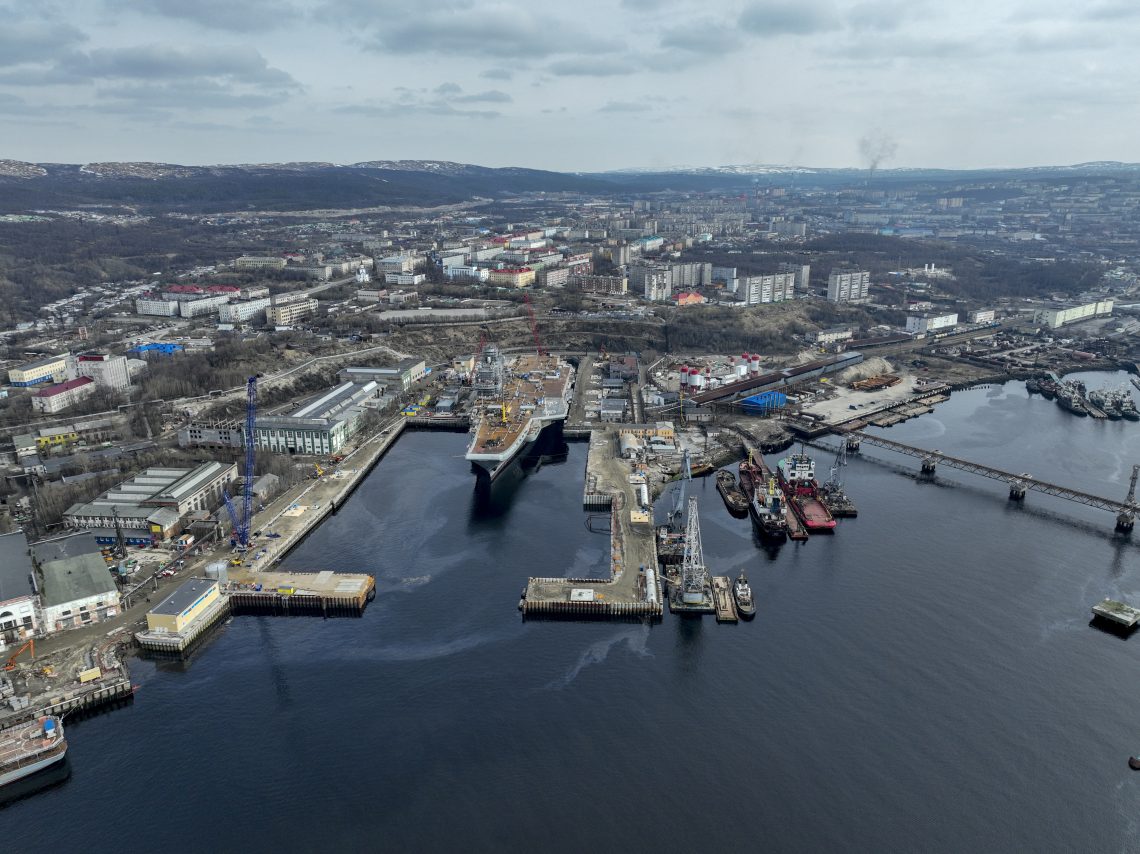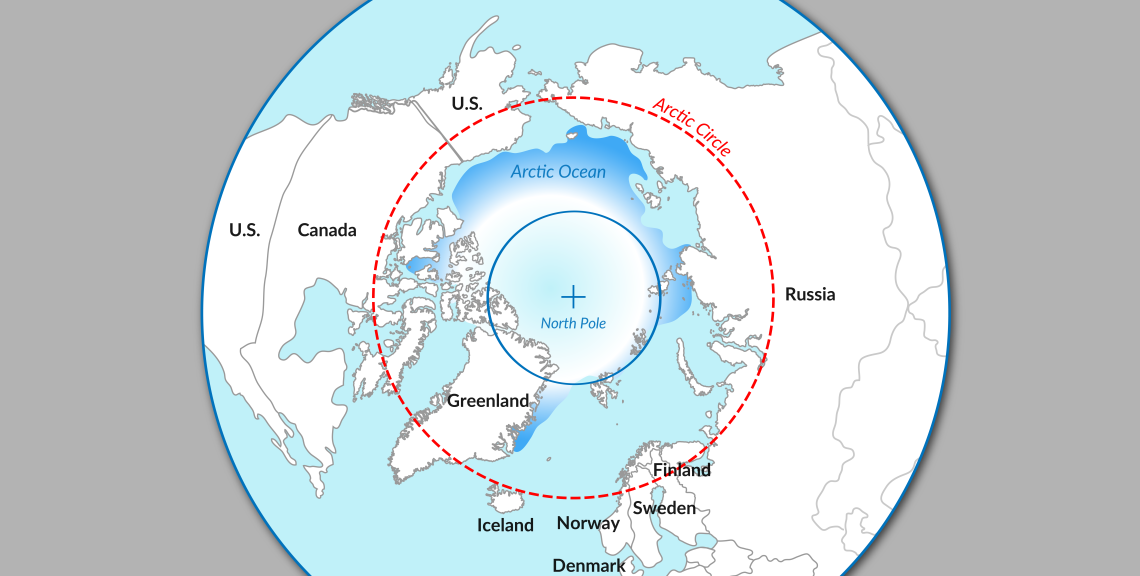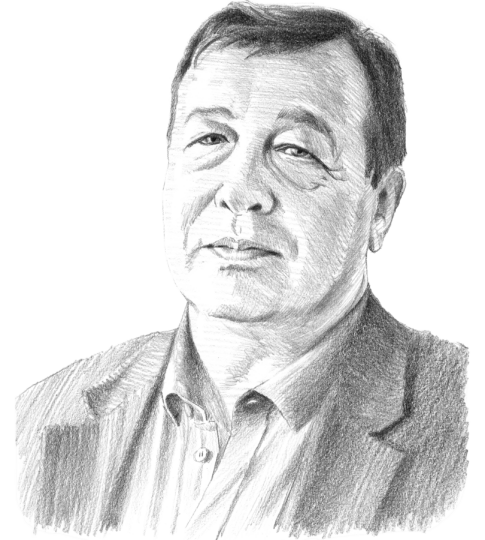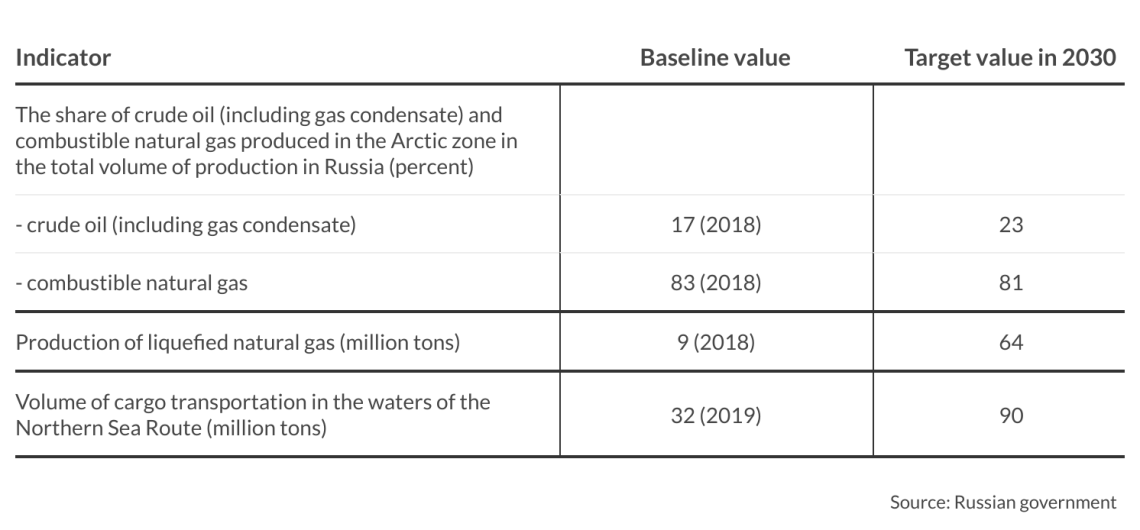Russia’s Arctic economy is heading for decline
Although oil and gas reserves are massive in Russia’s vast Arctic zone, the unsanctioned Nornickel, a top global producer of nonferrous metals, is the only bright economic spot.

In a nutshell
- Western sanctions are starting to cut oil and gas revenues
- Investment has dried up, making production goals unrealistic
- Trade partners are likely to bypass the Northern Sea Route
By geographical good fortune, Russia is a great Arctic power. The length of its coast along the Arctic Ocean is 22,600 kilometers, almost 60 percent of the world’s Arctic coast. The entire Arctic zone is four million square kilometers and sparsely populated because of the severity of the climate. The three largest Arctic cities are in Russia: Murmansk (325,000 inhabitants), Norilsk (205,000 inhabitants) and Vorkuta (85,000 inhabitants). The fourth-largest city is the Norwegian city of Tromso (62,000 inhabitants). Overall, only 2.4 million people live in the Russian Arctic, of which 300,000 belong to 47 indigenous ethnic groups. The rest are migrants and their descendants from more southern regions of Russia and the former Soviet Union.
Two decades of slave labor
In the 1930s, people arrived in the Arctic territories to develop large deposits of discovered nickel, copper and gold. The Soviets decided to use the Northern Sea Route as the shortest shipping lane from the northern European part of the Soviet Union to the Far East, connecting the Atlantic and Pacific oceans when navigable in the summer and autumn.
The massive use of labor from the gulags began in these areas. For example, the construction of the Norilsk Mining and Metallurgical Combine – now known as Nornickel – was provided by hundreds of thousands of prisoners, many of whom died from diseases, malnutrition and the harsh climate. Prisoners who mined gold in the Kolyma River area suffered some of the worst conditions.
After Soviet dictator Joseph Stalin’s death in 1953, the gulags were liquidated. The development of the Arctic was carried out with a voluntary workforce enticed by higher salaries and the opportunity to retire early. These incentives are still being used today to attract workers to the Arctic.
Facts & figures
The Arctic region

Vast oil and gas deposits
The next stage of Arctic exploration began after the discovery of large oil and gas fields there, which formed the basis of Soviet and Russian exports. Although less than 2 percent of Russia’s 145 million people live in the Arctic zone, the region provides almost 10 percent of the country’s economic output. In 2020, 80 percent of Russian combustible natural gas (including gas liquids) and 17 percent of its oil were produced there.
The continental shelf contains more than 85.1 trillion cubic meters of natural gas and 17.3 billion tons of oil. The Strategy for the Development of the Arctic Zone of the Russian Federation and Ensuring National Security until 2035, approved by President Vladimir Putin in 2020, declares these resources to be a “strategic reserve for the development of the mineral resource base of the Russian Federation.”
Lacking investment
The development of the Northern Sea Route is an essential part of the Arctic economy’s success. For this purpose, the Russian government plans to invest $29 billion and take these steps:
- Development of the infrastructure of seaports and shipping lanes in the waters of the northern seas – from the Barents to the Chukchi
- Creation of a naval operations headquarters on the entire water area of the Northern Sea Route
- Integration of transport and logistics services provided in the waters of the Northern Sea Route, based on a digital platform designed for paperless registration of multimodal transportation of passengers and cargo
- Construction of at least eight nuclear icebreakers for year-round navigation
Significant investments were also expected in the development of the economy of the Arctic zone and, above all, the development of the extractive industry there.
Facts & figures
However, even before 2022, achieving these goals was doubtful. This was due to two main factors. First, in the 2010s, there was a shortage of investment in the oil and gas sector. That was due to the long-term deterioration of the investment climate, including the first package of Western sanctions imposed on Russia in 2014 after the annexation of Crimea. Second, the emerging green transition of developed economies will cut the demand for nonrenewable energy sources by 2030.
The sanctions imposed on Russia after its February 2022 invasion of Ukraine have further complicated the prospects for Russian Arctic development. The gradual embargo on oil and gas purchases from Russia is taking hold. Moreover, potential trade partners will likely reject the use of the Northern Sea Route for international transit of goods. This likelihood will sharply limit the demand for goods and services that the Russian Arctic can produce.
That is especially true for natural gas, whose production and transportation for export have already begun to decline. In the first half of 2022, Russia reduced natural gas production by nearly 7 percent compared to the same period in 2021. In June, Russia produced just over 39 billion cubic meters of gas – 23 percent less than in the same month a year ago.
Oil production has also begun to fall, and the European oil embargo starting in December will only strengthen this trend. Output in August decreased for the first time since April – by 170,000 barrels per day, to just under 11 million barrels per day. In August, revenues from Russian oil exports fell by $1.2 billion (to $17.7 billion). That took place despite an increase in exports by 220,000 barrels per day, up to 7.6 million barrels per day.
Scenarios
It can be assumed that no new major economic projects will happen in the Russian Arctic or the rest of the country in the foreseeable future. In the absence of investment funds, there will be a gradual degradation of these territories. The only exception is the Norilsk Industrial District, where 44 percent of the world’s palladium and 22 percent of high-grade nickel are mined. Apparently, the Norilsk Nickel Corporation is not under European and American sanctions because of its global importance.
A decrease in economic activity in the Russian Arctic has benefits. The pressure on the fragile environment will subside, making it easier to clear this territory from the accumulated waste over the past decades.









